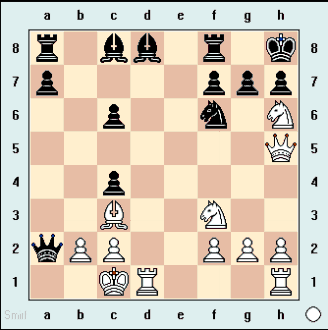The Magician of Riga's intuitive chess defeated logic
Crossword puzzle lovers may have wondered about the frequent clue “Russian chess champion” (three letters). The answer is “Tal,” as in Mikhail Tal, who died on June 28, 1992. The “Magician of Riga,” as he was known, Tal became the eighth World Champion in 1960, at the age of 23.
The Soviet-Latvian Grandmaster, who had been terrorizing the chess world for the previous five years, particularly the relatively staid Soviet players, with his unorthodox style of play, was, at the time, the youngest player to win the world championship.
Tal was known as a brilliant attacker, a creative genius, who played intuitively and unpredictably. Today, with modern computers, we know that many of his speculative sacrifices were unsound and should have lost.
Tal himself said “There are two types of sacrifices: correct ones, and mine.”
However, it was not easy, even for the world’s best players, to refute these sacrifices over the board, and contemporary analysts usually were unable to show why or how Tal could have been defeated.
His style was a challenge to the Soviet school, exemplified by Mikhail Botvinnik, which preferred systematic logical chess, buttressed by hard work and study. Botvinnik, who, with one interruption, had been Champion since 1948, prepared carefully and methodically for the 1960 match.
Tal, in contrast, simply played a tournament in his hometown. Tal decisively won the match by a score of 12 ½ - 8 ½.
However, the Fédération internationale des échecs rules at the time permitted a rematch for a defeated Champion, which Botvinnik won, 13-8.
In the second match, Botvinnik, once again carefully preparing for the match, deliberately played for closed positions, leading to positional struggles and endgames, and avoiding the sharp tactical play that Tal loved.
During the rematch, Tal continued to play his favorite Nimzo-Indian Defense and the aggressive advance variation of the Caro-Kann, even as it became clear that these openings were not working for him. It was not until five years after the match that Tal, playing White against Botvinnik, abandoned the advance variation in favor of the more common Panov variation and won easily.
Tal had a great career, winning the USSR championship six times between 1957 and 1978 (when that tournament was probably the strongest tournament in the world), established a record in 1973 - 74 by playing 95 tournament games without a loss (46 wins and 49 draws), and tied with Karpov for first in the 1979 Montréal “Tournament of Stars.”
Although he continued to compete in world championship cycles, he never again played a match for the world championship. However, at the age of 51, he won the World Blitz Championship ahead of then world Champion Kasparov.
Tal died young: He suffered from serious health problems all his life, complicated by chain-smoking, excessive drinking, and partying. His wife, Salli Landau (they were married from 1959-1970), who wrote a biography of Tal, noted that, while some people thought he might have lived longer by taking better care of himself, if he had done so, he would not have been Tal.
She also commented that Tal “was so ill equipped for living… When he traveled to a tournament, he could even fact is on suitcase… He didn’t even know how to turn on the gas for cooking…Of course if he had made some effort, he could have learned all of this. But it was all boring to him. He just didn’t need to.”
In the spring of 1992, shortly before he died, Tal escaped from his hospital room to play in a blitz tournament. The following game, played against Kasparov, is generally regarded as his last game.
Tal –Kasparov 1. e4 c5 2. Nf3 d6 3. Bb5+ Nd7 4. d4 Nf6 5. O-O a6 6. Bxd7 Nxd7 7. Nc3 e6 8. Bg5 Qc7 9. Re1 cd 10. Nxd4 Ne5 11. f4 h6 12. Bh4 g5 13. fe gh 14. ed Bxd6 15. Nd5 (a Typical Tal move! Houdini says the position now goes to -2.0 for Tal) ed 16. ed+ Kf8 17. Qf3 and Black forfeited on time.
The computer says Tal is losing, but it is not so easy to meet the threats on the board. And so Tal leaves the game as he found it, playing aggressively, speculatively, for the fun and joy of the game.
No column for the summer
I have been writing this column for more than four years, and am going to take a break for the summer, until late August.
In the last year, I have put a lot of energy into chess — playing, studying, writing about it — and I want to take some time to do some self-evaluation, decide whether I want to keep doing as many chess things as I have been doing.
This week’s problem
Here Tal finds a neat mating attack against former world champion Vasily Smyslov, who had also defeated Botvinnik for the world championship (in 1957) only to lose a rematch the following year.
After the crucial first move, White mates in no more than four moves.
